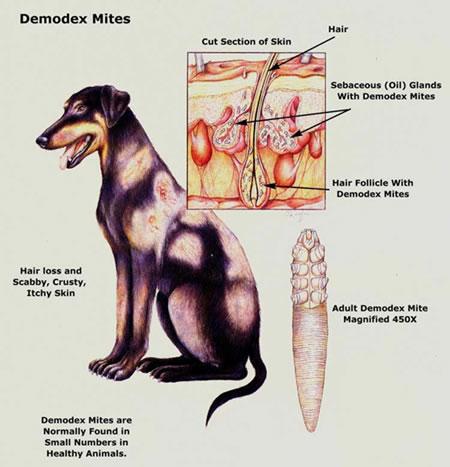
Scabies, tiny spiderlike mites, are highly contagious and are transmitted primarily by direct contact and through contaminated grooming equipment and kennels. These mites are also transferable to humans and other pets. Probably no other skin disease will cause your dog to scratch and bite at her skin with such intensity.
(Check out 2013 Recap: Flea, Tick, and Lice)
Scabies attacks the skin of the ears, elbows, hocks, and the underside of the chest and face. The onset is abrupt with scratching, hair loss, and inflamed skin in these areas. Crusty ear tips are characteristic. A classic test for scabies is to rub the ear flap between your fingers and watch the dog scratch on the same side. In the later stages the skin becomes thick, crusted, scaly, and darkly pigmented. Scabies in people can produce an itchy rash, typically found at the belt line. This rash is caused by insects that have transferred from the dog. Scabies mites, however, do not live on human skin for longer than three weeks.
If the dog’s symptoms strongly suggest scabies, your veterinarian may decide to begin treatment as a diagnostic test. A positive response to the treatment confirms the diagnosis of scabies. Scabies must be treated under veterinary supervision. Clip the hair away from scabies-affected areas on medium-and long-haired dogs and bathe the entire animal using a benzoyl peroxide shampoo. The shampoo loosens scales and makes it possible for an insecticide dip to penetrate the hair pores.

Doc Scabies
It’s likewise important to note that treating all dogs that have come into contact with the affected canine is a must.

